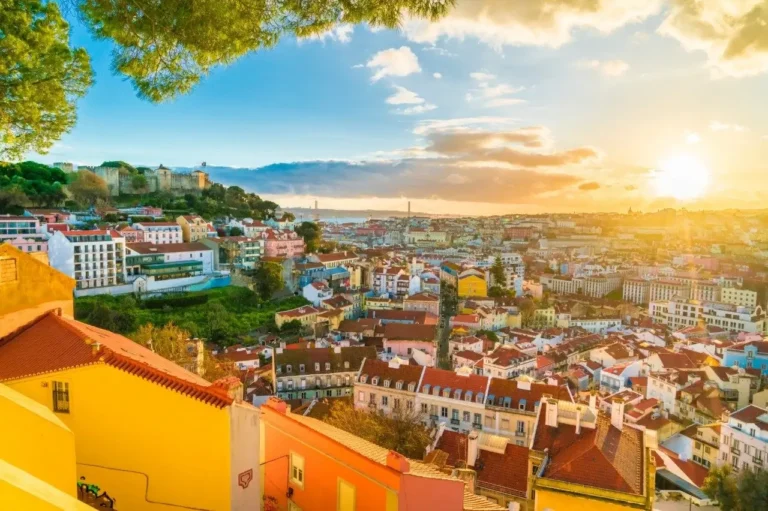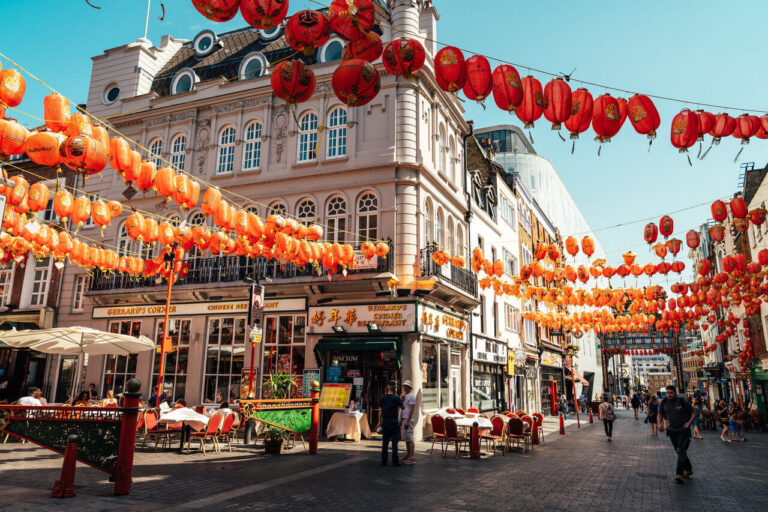When Is The Best Time To Visit Madrid
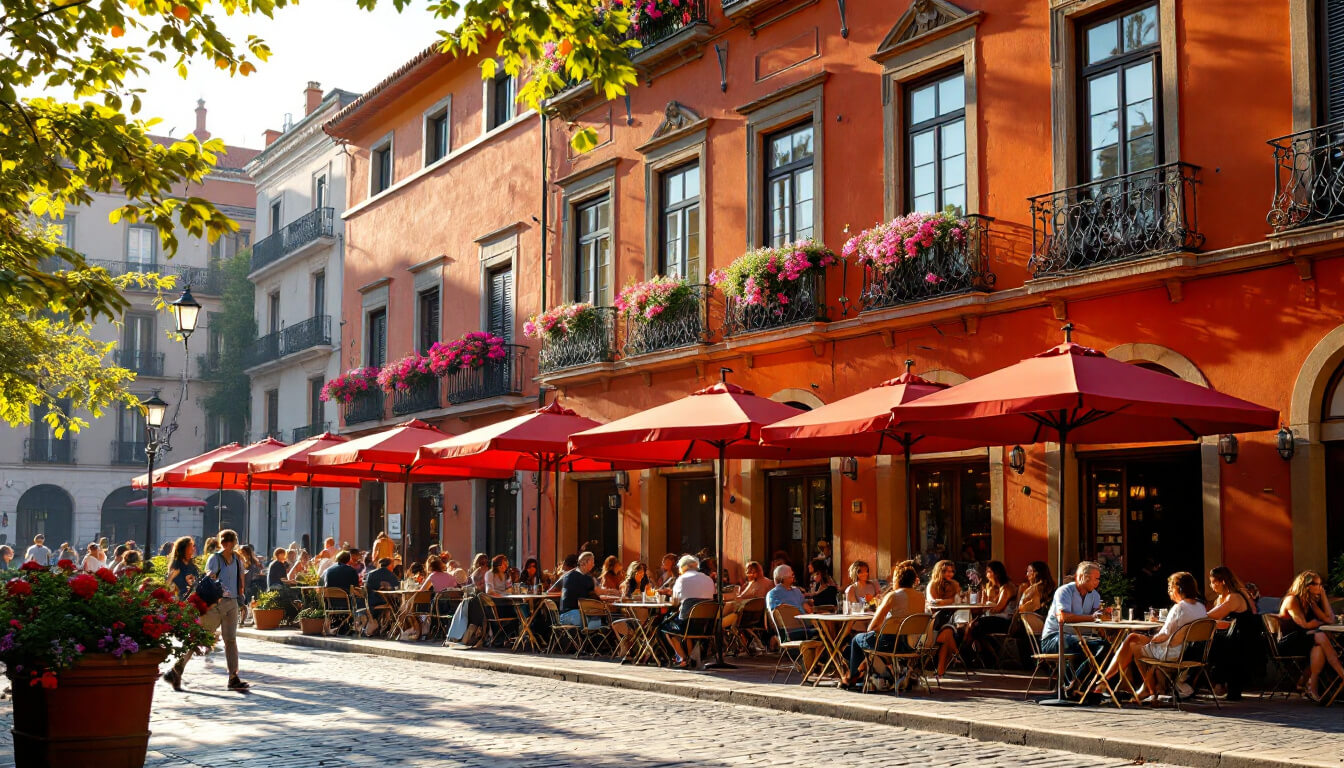
Choosing the Ideal Season for Your Madrid Trip – Madrid’s charm shifts dramatically with each passing season, making the timing of a visit essential for the perfect Spanish getaway.
- Best Time To Visit Madrid: Understanding Madrid’s Climate and Seasons
- Typical Temperature in Madrid Spain Across the Year
- How Madrid Temperature By Month Affects Tourism
- Spring vs. Autumn Weather in Madrid
- Spring in Madrid: March to May
- Madrid Weather March and Potential Rainfall
- Why This May Be a Favorable Start for a Madrid Vacation
- Madrid Weather May as a Transition to Summer
- Best Time to Go to Madrid for Cultural Events
- Summer in Madrid: June to August
- How Madrid in June Attracts Outdoor Concerts
- Tips for Managing Warmer Temperatures
- Madrid In August for Deals and Local Holidays
- Is This Period the Worst Time to Visit Spain for Some?
- Autumn in Madrid: September to November
- Weather Madrid September and Lower Tourist Volume
- Why This Can Be a Comfortable Madrid Travel Window
- Weather in Madrid in October for Sightseeing
- Seasonal Flavors and Festivities
- Madrid Weather November Impact on Outdoor Activities
- Advice for Packing and Cultural Events
- Winter in Madrid: December to February
- Holiday Markets and Lights for a Memorable Madrid Vacation
- When Is the Best Time to Visit Madrid for Holiday Cheer?
- Embracing Off-Peak Travel to Madrid
- Could This Be the Best Time to Visit Madrid if You Prefer Less Crowds?
- Special Considerations for Planning
- Peak Summer Heat and Festival Crowds
- How to Navigate Potential Discomfort
- Balancing City Breaks vs. Extended Trips
- Top Activities to Enjoy Over Multiple Days
- What to Do in Madrid During Each Season
- Outdoor Cafés, Parks, and Cultural Events
- Madrid Weather April vs. Madrid Weather October
- Indoor Attractions for Extreme Heat or Cold
- Enjoying Madrid in July or Madrid In November
- Wrapping Up
While summer draws crowds to sweltering streets and winter brings a festive chill, the sweet spots of spring and autumn transform the capital into a local’s paradise.
With comfortable temperatures, smaller tourist crowds, and an abundance of cultural events, these shoulder seasons reveal Madrid’s most authentic side – but there’s more to reflect on before booking those tickets.
In this Madrid travel guide, we’re going to breakdown each season so you can have clearer overviews on when is the best time to visit Madrid for various occasions.
TL;DR
Hide- Spring (May-June) and autumn (September-October) offer ideal temperatures between 15-25°C (59-77°F) with clear skies and fewer tourists.
- March provides mild temperatures around 15°C (59°F) with blooming flowers and locals enjoying outdoor cafes.
- Hotel rates drop by up to 40% in August, making it budget-friendly despite hot temperatures above 32°C (90°F).
- Madrid experiences over 300 sunny days annually, with summer temperatures often exceeding 35°C (95°F).
- Winter months (December-February) see temperatures around 4°C (40°F) but offer festive markets and lower accommodation prices.
Best Time To Visit Madrid: Understanding Madrid’s Climate and Seasons
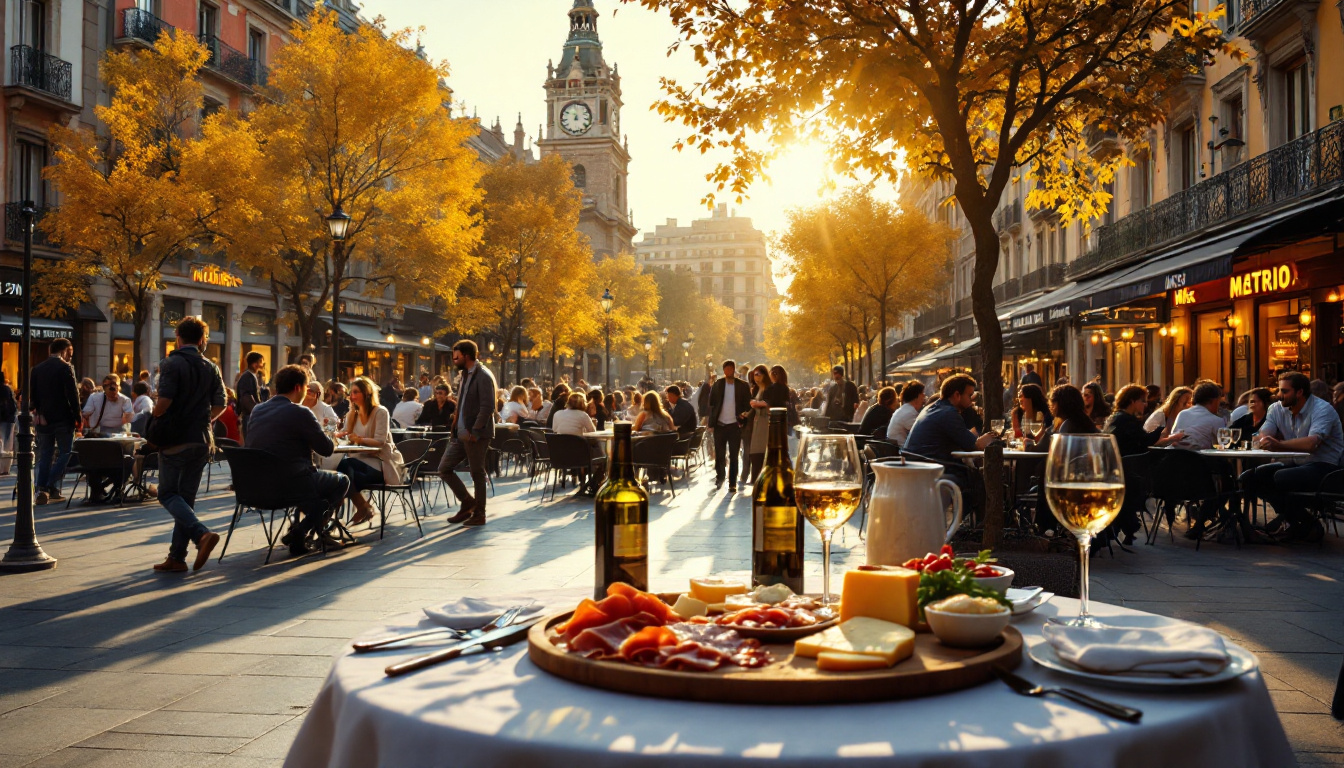
Madrid’s distinct four seasons shape the city’s character throughout the year, from scorching summers that send locals scrambling for shade to crisp winters that transform the capital into a festive wonderland.
Spring and fall grace Madrid with mild temperatures and clear skies, creating perfect conditions for exploring the city’s countless plazas and parks on foot.
While each season offers unique charms, most travelers find May, June, September, and October deliver that sweet spot of pleasant weather, manageable crowds, and lively cultural events that make Madrid truly shine.
Madrid Weather By Month Overview
Madrid’s weather follows a distinct annual pattern that shapes the city’s tourism flow, with temperatures ranging from chilly winter lows around 40°F (4°C) to scorching summer highs that can exceed 95°F (35°C).
The capital’s continental Mediterranean climate brings hot, dry summers and cool winters, while spring and fall offer pleasant temperatures that make outdoor exploration particularly enjoyable.
Understanding these seasonal shifts helps visitors plan their trips strategically, as the extreme summer heat often drives locals to escape the city in August.
Meanwhile, the mild temperatures of May and October create perfect conditions for experiencing Madrid’s lively street life!
Typical Temperature in Madrid Spain Across the Year
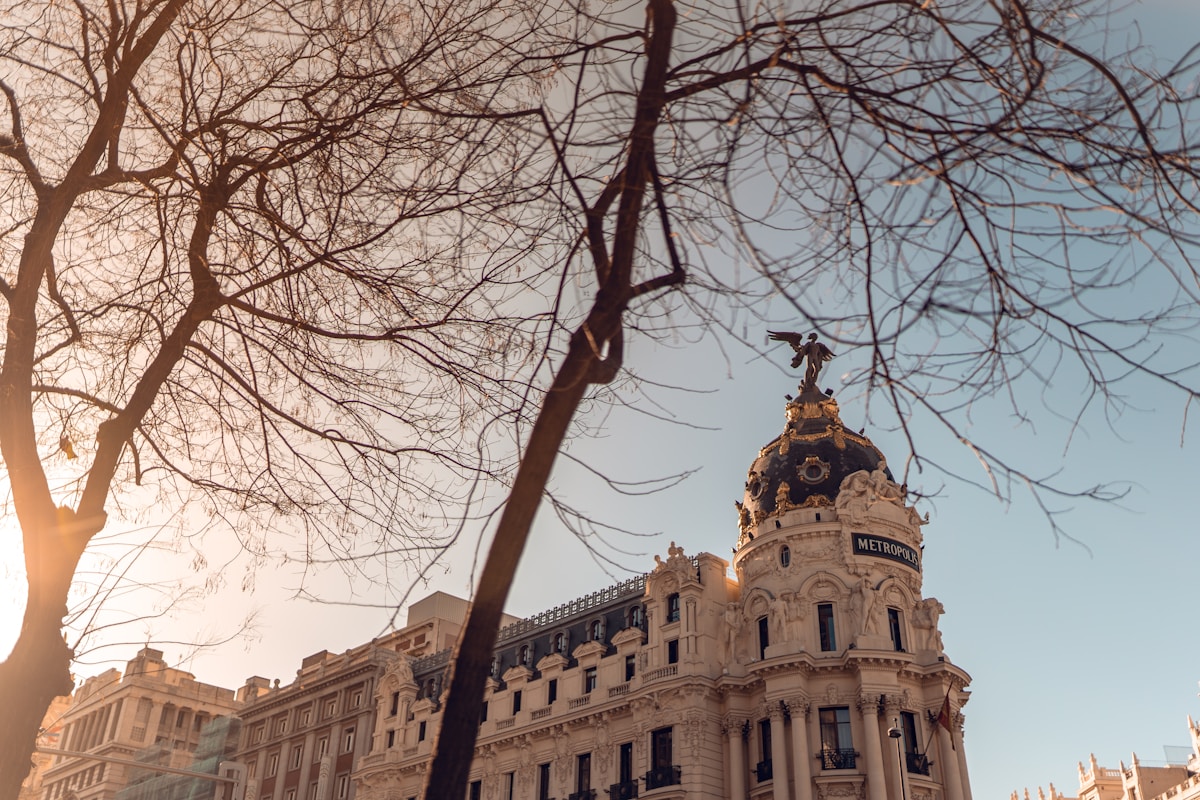
Temperatures in Spain’s capital city swing dramatically throughout the year, with scorching summers and chilly winters creating distinct seasonal personalities.
Madrid temperature by month ranges from winter lows around 3°C (37°F) to summer highs reaching 40°C (104°F). July brings blazing heat, while March offers mild conditions around 15°C (59°F).
This Mediterranean climate delivers 300+ days of sunshine annually.
How Madrid Temperature By Month Affects Tourism
While each season brings its own distinct charm to Spain’s capital, savvy travelers can strategically plan their visits based on the city’s temperature patterns to maximize comfort and enjoyment.
Madrid weather June peaks in tourism due to perfect conditions, while madrid weather november sees fewer crowds.
The weather in madrid in april and madrid in march offer mild temperatures, and madrid weather september provides an ideal shoulder season sweet spot.
Best Months to Visit Spain for Ideal Conditions
When comparing Madrid’s spring and autumn seasons, both offer spectacular weather that makes exploring the city a joy.
Spring brings mild temperatures and blooming flowers throughout Madrid’s parks and gardens, though occasional rainfall can interrupt outdoor plans.
Fall delivers golden sunshine and crisp air perfect for wandering the charming neighborhoods in Madrid, with the added bonus of fewer tourists than peak summer months.
Spring vs. Autumn Weather in Madrid
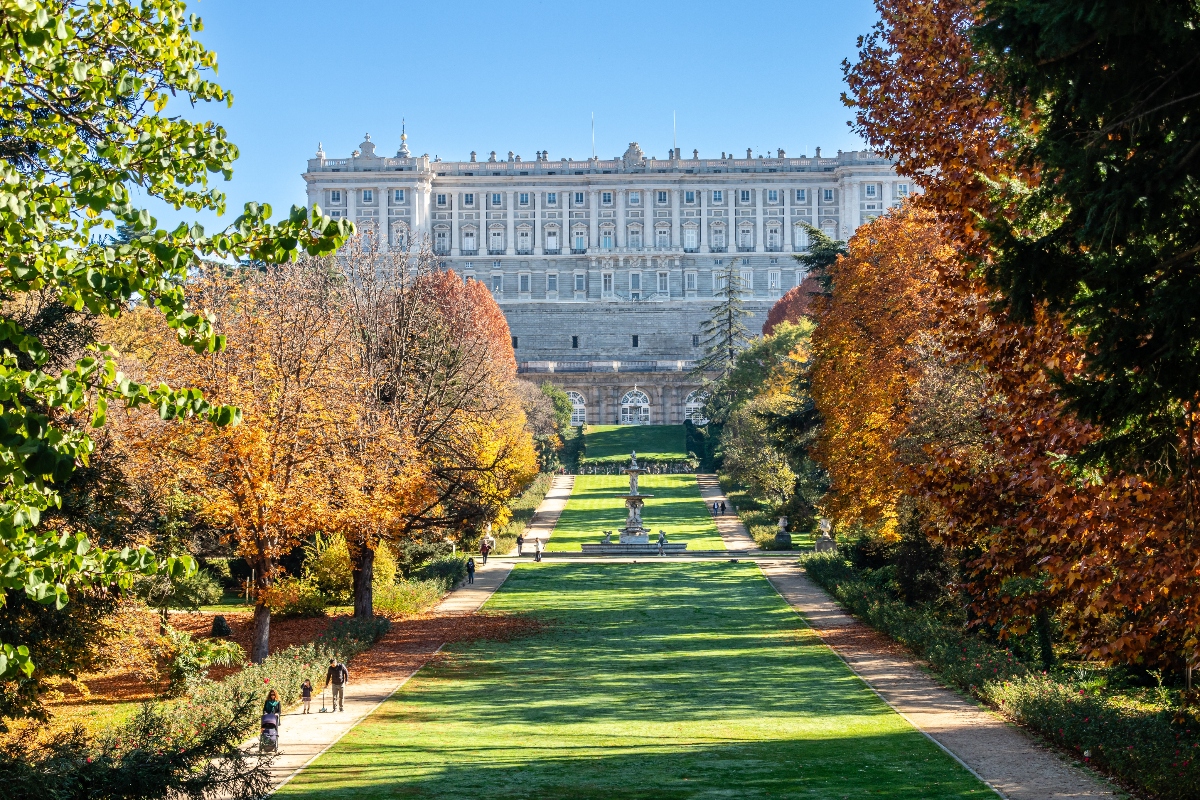
Comparing Madrid’s spring and autumn seasons reveals two ideal windows for experiencing the city at its finest.
- Weather in Madrid in September brings golden light and comfortable temperatures around 25°C (77°F)
- Madrid in October offers crisp mornings and sunny afternoons perfect for outdoor cafes
- The weather mirrors in reverse during springtime, with Madrid in May featuring fragrant blooms
- Both seasons avoid summer crowds while providing ideal conditions for exploring plazas and parks
Spring in Madrid: March to May
Spring breathes new life into Madrid as March ushers in mild, comfortable days perfect for exploring the city’s grand boulevards without the crushing summer crowds.
The warming trend continues through April, when sidewalk cafes begin filling with locals enjoying their afternoon cañas and tapas in the pleasant sunshine.
Madrid in March: Mild Days and Less Crowded
March brings Madrid’s first taste of spring, with daytime temperatures typically hovering between 15-20°C (59-68°F) and scattered showers that breathe life into the city’s gardens and parks.
While light rain gear is advisable, the mild weather creates perfect conditions for exploring Madrid’s outdoor attractions and meandering through its historic neighborhoods without the summer crowds.
Visitors in March can experience the city like a local, enjoying shorter lines at major museums and finding it easier to secure reservations at popular restaurants and tapas bars.
Madrid Weather March and Potential Rainfall
As temperatures begin to climb into the mild mid-60s°F (around 18°C), Madrid awakens from its winter slumber with a lively energy.
The weather in Madrid in March brings occasional rain showers, making it wise to pack a light umbrella while exploring the city’s awakening charm.
- Average rainfall: 4-6 days of precipitation
- Morning temperatures: Cool 45°F (7°C)
- Afternoon highs: Pleasant 65°F (18°C)
- Clear skies: 65% of the month
Why This May Be a Favorable Start for a Madrid Vacation

The mild temperatures and diminishing crowds of March create an ideal opportunity to begin exploring Madrid’s treasures.
Savvy travelers know that visiting Madrid during this spring sweet spot means shorter queues at major attractions and more reasonable hotel rates.
The pleasant Madrid weather may extend through June, but March offers that perfect blend of comfortable conditions and pre-peak season advantages.
Madrid in May: Warmer Evenings and Festivities
As May arrives in Madrid, the city shifts into a lively pre-summer atmosphere with temperatures hovering comfortably between 20-25°C (68-77°F). This climate is perfect for extended evening strolls through the historic center.
The month bursts with cultural energy during the San Isidro Festival, Madrid’s most important annual celebration. This festival features traditional chotis dancing, zarzuela performances, and open-air concerts in Plaza Mayor.
While the warming weather draws more tourists than earlier spring months, May’s perfect blend of festivities and favorable climate makes it an ideal time to experience Madrid’s dynamic cultural scene.
Madrid Weather May as a Transition to Summer
Springtime magic reaches its peak during May in Madrid, when balmy temperatures and extended daylight transform the city’s evening culture. The weather in Madrid shifts gracefully from spring to summer, creating perfect conditions for outdoor adventures and cultural experiences.
- Daytime temperatures hover between 20-25°C (68-77°F)
- Evening temperatures remain mild at 12-15°C (54-59°F)
- Clear skies dominate with occasional brief spring showers
- Humidity levels stay comfortable at 45-55%
Best Time to Go to Madrid for Cultural Events
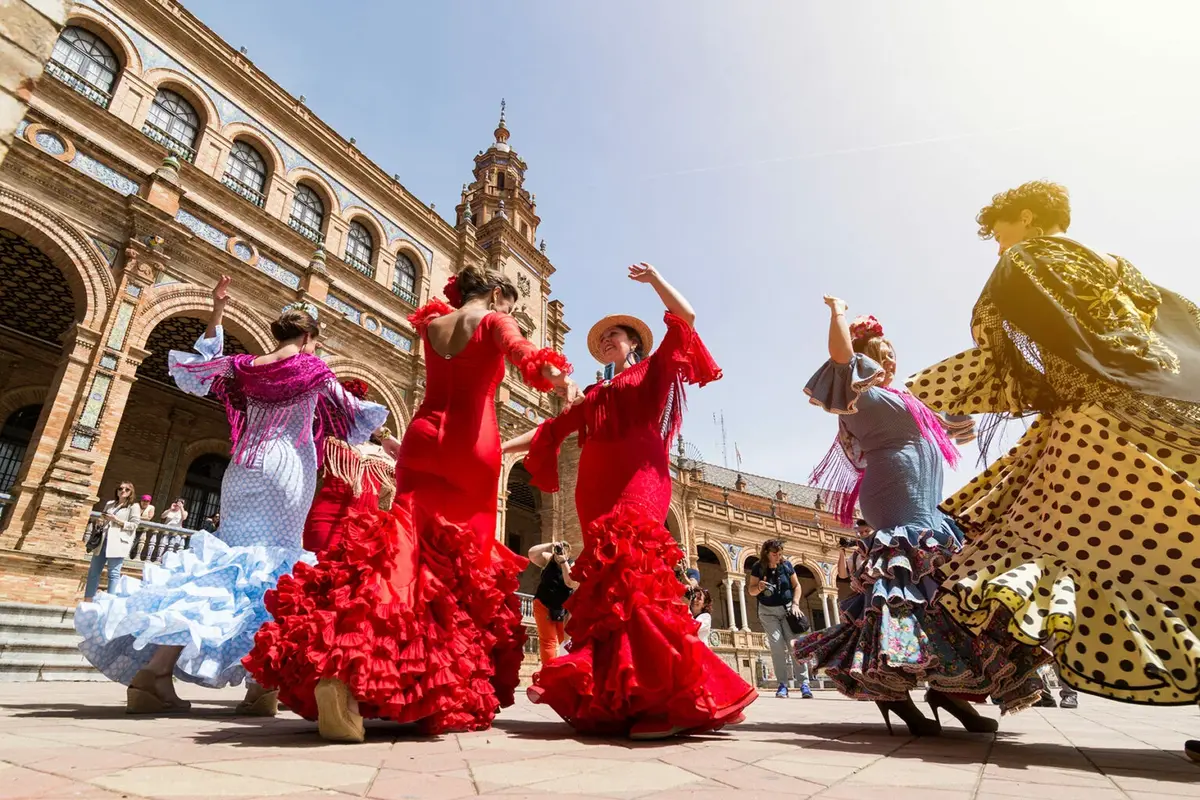
Madrid’s cultural calendar bursts into lively life during May, when warmer evenings set the stage for an explosion of festivities and celebrations.
While madrid travel peaks in summer months like August, savvy visitors know the city’s rich cultural offerings span the entire year – from cozy madrid December weather perfect for museum visits to lively outdoor festivals in February and November.
Summer in Madrid: June to August
Madrid’s summer begins with June’s mounting temperatures, which serve as a preview of the intensifying heat to come.
By July and August, the mercury regularly soars above 90°F (32°C), prompting locals to escape to coastal retreats and leaving the city’s grand boulevards distinctly less crowded.
While many consider August too hot for comfort, savvy travelers can take advantage of reduced hotel rates and shorter lines at major attractions, though they should plan their activities for early mornings or late evenings to avoid the scorching midday sun.
Madrid Weather in June: Approaching Peak Heat
Madrid’s June weather sets the perfect stage for the city’s lively outdoor concert scene, with venues like the Jardines de Sabatini hosting enchanting evening performances under the stars.
While daytime temperatures begin climbing into the mid-80s Fahrenheit, locals beat the heat by adopting the traditional Spanish schedule of late dinners and nighttime activities.
Visitors can stay comfortable by carrying water bottles, seeking shade in Madrid’s leafy parks, and planning indoor cultural activities like museum visits during the peak afternoon heat.
How Madrid in June Attracts Outdoor Concerts

The energy of summer evenings fills the city’s plazas and parks with melodic sounds as June ushers in the outdoor concert season.
While madrid weather in june brings warmth perfect for nighttime entertainment, locals and visitors gather to experience the city’s lively music scene under starlit skies.
- Retiro Park’s outdoor amphitheater hosts free classical concerts
- Plaza Mayor features weekly flamenco performances
- Madrid Rio area presents riverside jazz sessions
- Botanical Gardens offer intimate acoustic shows
Tips for Managing Warmer Temperatures
Inevitably, summer temperatures in Spain’s lively capital climb steadily through June before reaching their zenith in July and August, when daily highs regularly soar past 90°F (32°C).
To beat the heat, locals recommend exploring early mornings or evenings, seeking refuge in air-conditioned museums, and carrying water.
Unlike madrid weather in march or madrid weather january, summer requires strategic planning to stay comfortable outdoors.
Madrid in August: High Temperatures and Quieter Streets
August brings scorching temperatures to Madrid, prompting many locals to escape to coastal areas and leaving behind a quieter, more peaceful city perfect for budget-conscious travelers seeking deals on accommodations.
While some tourists shy away from Madrid’s intense summer heat, savvy visitors can take advantage of reduced crowds at major attractions and special events during local festivals like La Paloma.
The city’s famous August holidays create a unique atmosphere where visitors can experience Madrid like a local, though travelers should note that some smaller shops and restaurants may operate on limited schedules or close entirely for vacation.
Madrid In August for Deals and Local Holidays

During Madrid’s hottest month, many locals flee to coastal towns, leaving behind a uniquely peaceful capital city perfect for savvy travelers looking to score amazing deals.
- Hotels slash prices up to 40% off peak season rates
- Most restaurants offer special summer menu deals
- La Paloma Festival brings lively street celebrations August 15
- San Cayetano, San Lorenzo, and La Paloma festivals transform local neighborhoods into party zones
Is This Period the Worst Time to Visit Spain for Some?
While Madrid’s summer charm captivates many visitors, the scorching temperatures from June through August can prove challenging for heat-sensitive travelers and those seeking a fully authentic local experience.
With temperatures regularly soaring above 95°F (35°C) and many local businesses closed for vacation, some travelers find the city less appealing during this period, despite the reduced tourist crowds.
Autumn in Madrid: September to November
Autumn brings Madrid’s most enchanting season, when summer’s intense heat mellows into picture-perfect weather for exploring the city’s countless attractions.
As September shifts into October, visitors can experience the spectacular transformation of Retiro Park’s trees into a canvas of red and gold, while savoring the crisp evening air that’s ideal for tapas-hopping through lively neighborhoods.
The season concludes in November with cooler temperatures and occasional rain showers, but the city maintains its energetic pulse as locals and tourists alike retreat to cozy cafes and world-class museums.
Madrid in September: Mild and Pleasant
September ushers in Madrid’s splendid autumn season with pleasantly mild temperatures and noticeably thinner tourist crowds, creating an ideal environment for exploring the city’s countless attractions.
The comfortable daytime highs hovering around 25°C (77°F) make lengthy outdoor activities, from wandering through El Retiro Park to architectural tours, thoroughly enjoyable without summer’s intense heat.
As summer vacation season winds down, visitors can take advantage of shorter queues at major museums, more available restaurant reservations, and often better rates on accommodations throughout the city.
Weather Madrid September and Lower Tourist Volume
The mild temperatures of Madrid’s early fall make September an ideal time to explore the Spanish capital without summer’s sweltering heat.
Crowds thin out as peak season ends, creating a more relaxed atmosphere throughout the city.
- Average daytime temperatures hover between 18-25°C (64-77°F)
- Tourist queues at major attractions decrease by up to 40%
- Outdoor café terraces remain pleasantly busy but not overcrowded
- Hotel rates begin dropping from summer peak prices
Why This Can Be a Comfortable Madrid Travel Window
Mild breezes and golden sunlight create an enchanting atmosphere across Madrid during this sweet spot in the calendar, making it one of the most comfortable periods to explore the Spanish capital.
The temperature hovers around a perfect 20-25°C (68-77°F), enabling visitors to wander through El Retiro Park or enjoy outdoor cafés without the summer swelter or winter chill.
Madrid in October: Crisp Evenings and Vibrant Colors
October brings a magical transformation to Madrid’s urban landscape, as tree-lined boulevards burst into brilliant autumn colors and temperatures settle into a perfect sweet spot for exploring the city.
Crisp morning air and pleasantly cool evenings create ideal conditions for wandering through Madrid’s countless plazas and parks, while sunny afternoons hover around 20°C (68°F).
The tenth month ushers in a bounty of seasonal treats – from roasted chestnuts sold by street vendors to traditional autumn festivals celebrating the harvest, making it an enchanting time to experience the Spanish capital’s culinary and cultural treasures.
Weather in Madrid in October for Sightseeing
Autumn colors paint Madrid in their finest hues during October, when comfortable daytime temperatures hover around 20°C (68°F) and provide ideal conditions for exploring the city’s countless attractions.
- Light jacket weather with minimal rainfall creates perfect conditions for wandering Madrid’s charming streets.
- Crystal-clear skies offer stunning photo opportunities of historic landmarks.
- Pleasant temperatures last well into the evening for outdoor dining.
- Cool mornings are ideal for visiting bustling markets and parks.
Seasonal Flavors and Festivities
As crisp temperatures embrace the Spanish capital, Madrid’s culinary scene bursts with the rich flavors of the harvest season.
Local markets overflow with seasonal delicacies like roasted chestnuts, wild mushrooms, and hearty cocido madrileño.
October brings the lively Fiesta de la Hispanidad celebrations, where traditional dancing and music fill the streets while food vendors serve up autumnal treats like churros con chocolate.
Madrid in November: Cooler Start to Winter
November brings a distinct shift in Madrid’s atmosphere as temperatures dip into the 50s Fahrenheit during the day and the 40s at night, making outdoor sightseeing more comfortable with proper layering.
While the brisk air might discourage lounging in outdoor cafés, it’s perfect for exploring Madrid’s world-class museums and ducking into cozy tapas bars between cultural activities.
The month kicks off with All Saints’ Day celebrations and continues with theatrical premieres and gallery openings, offering visitors plenty of indoor entertainment options as autumn changes to winter.
Madrid Weather November Impact on Outdoor Activities

The gentle cooling of Madrid’s temperatures in November creates ideal conditions for exploring the city’s outdoor treasures without summer’s intense heat.
The mild climate encourages visitors to discover Madrid’s open-air attractions at a relaxed pace.
- Leisurely walks through El Retiro Park’s autumn foliage
- Comfortable outdoor dining at Plaza Mayor’s historic cafes
- Photography sessions at Temple of Debod during golden hour
- Sightseeing tours of Royal Palace gardens without crowds
Advice for Packing and Cultural Events
Three essential packing strategies define a successful autumn visit to Madrid’s cultural season: layered clothing for variable temperatures, weatherproof accessories for occasional showers, and formal attire for prestigious events.
For better insights on what to pack when traveling to Madrid, you can use our free AI Travel Packing List Generator tool. This tool empowers the power of AI to generate the best packing list for your next Madrid vacation.
Local theaters showcase world-class performances at Teatro Real, while sophisticated art exhibitions at Reina Sofia demand smart casual dress.
November’s Film Festival and Jazz Festival transform the city into a cultural paradise worth dressing up for.
Winter in Madrid: December to February
Winter transforms Madrid into a festive wonderland, with December bringing twinkling holiday lights, bustling Christmas markets, and temperatures that hover around 10°C (50°F).
The city sparkles with seasonal charm as locals and visitors alike gather at Plaza Mayor for hot chocolate and churros, while New Year’s celebrations at Puerta del Sol create unforgettable memories.
Madrid December Weather: Festive Spirit in the City
Madrid transforms into a magical wonderland during December, when the city sparkles with thousands of twinkling lights and festive decorations adorning every major street and plaza.
The city’s holiday markets, especially the famous one in Plaza Mayor, buzz with activity as locals and tourists browse handcrafted ornaments, traditional sweets, and unique gifts while sipping hot chocolate or mulled wine.
Winter temperatures hover between 40-55°F (4-13°C), making it perfectly comfortable to explore the illuminated streets and embrace Madrid’s enchanting holiday atmosphere!
Holiday Markets and Lights for a Memorable Madrid Vacation
During the festive season, Plaza Mayor transforms into a dazzling wonderland as the city’s most beloved Christmas market fills the historic square with twinkling lights, traditional decorations, and the cheerful bustle of holiday shoppers.
- Gran Vía sparkles with thousands of LED lights creating magical archways and glittering curtains.
- Cortylandia’s animated display delights visitors with moving figures and holiday music.
- Mercado de San Miguel offers seasonal treats and warming winter drinks.
- Plaza de España features a stunning light tunnel perfect for festive photos.
When Is the Best Time to Visit Madrid for Holiday Cheer?
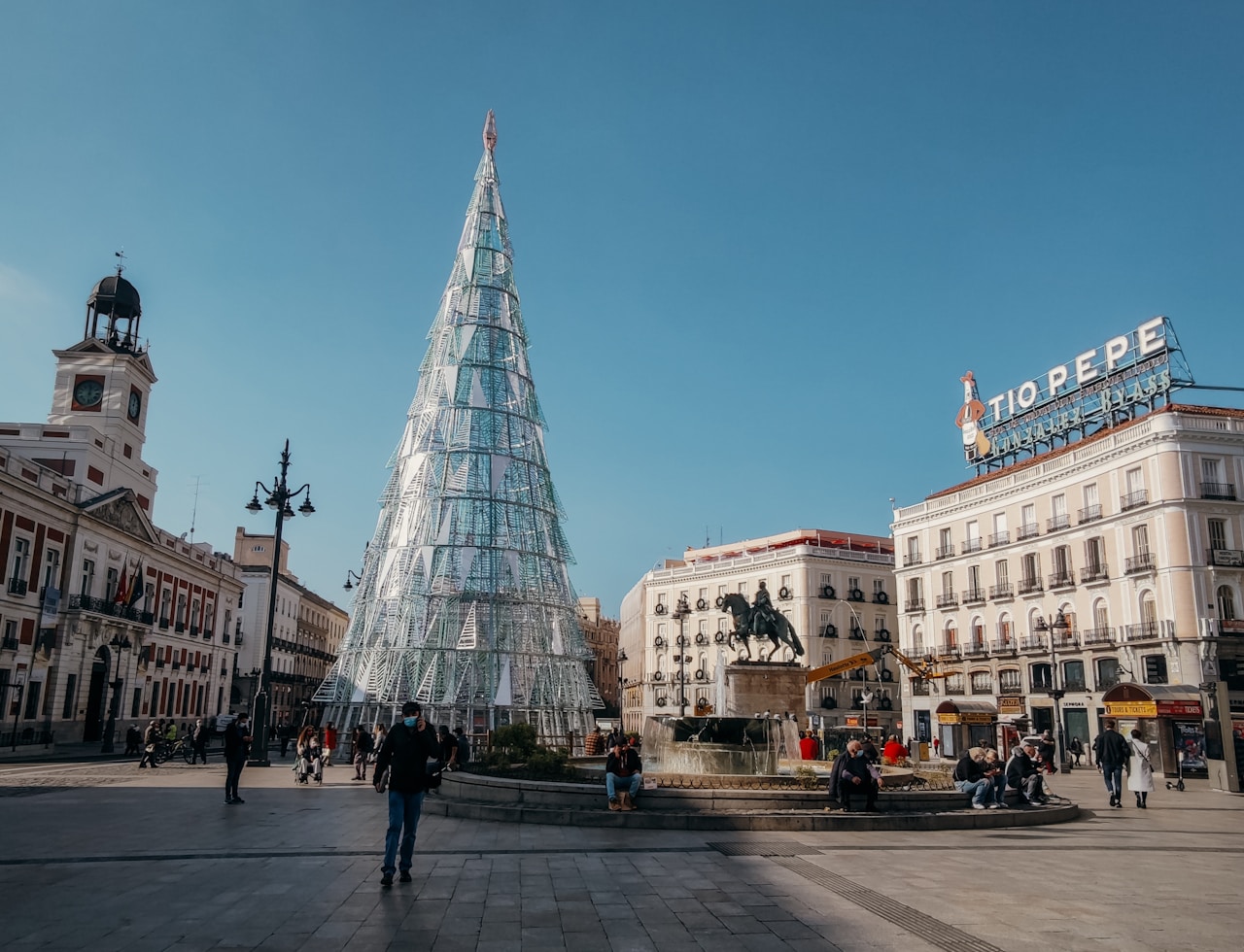
For travelers seeking the most enchanting holiday atmosphere, December stands out as the prime time to experience Madrid’s festive magic.
The city transforms into a winter wonderland with twinkling lights adorning the historic streets, while Plaza Mayor hosts a sprawling Christmas market.
Despite chilly temperatures hovering around 10°C (50°F), the spirited holiday ambiance and festive events make December truly special.
Madrid in February: A Quiet and Cheaper Season
February in Madrid reveals a quieter, more intimate side of the city as winter’s chill keeps many tourists away, making it an ideal time for travelers who prefer exploring without the usual crowds.
The dramatic drop in visitor numbers means considerably lower prices for flights and accommodations, with many hotels offering their most competitive rates of the year.
Savvy travelers can experience Madrid’s world-class museums, historic plazas, and authentic tapas bars in peaceful tranquility, all while enjoying substantial savings on their travel budget.
Embracing Off-Peak Travel to Madrid
Why brave the summer crowds when Madrid’s quietest month offers such appealing advantages? Off-peak travelers discover a more authentic, relaxed side of Spain’s lively capital, where locals outnumber tourists and spontaneous exploration becomes possible.
- Hotel rates plummet up to 40% during winter months
- Museums and attractions operate with minimal wait times
- Restaurants offer better availability and winter specials
- Streets and plazas retain their charm minus the tourist chaos
Could This Be the Best Time to Visit Madrid if You Prefer Less Crowds?
Although peak season brings lively energy to Madrid’s streets, savvy travelers who venture to the Spanish capital during the serene winter months of December through February discover a uniquely peaceful side of the city.
With considerably fewer tourists around, visitors can explore iconic spots like Retiro Park and the Royal Palace at their own pace, while enjoying reduced hotel rates and shorter restaurant wait times.
Special Considerations for Planning
While August tends to be Madrid’s most challenging month due to intense heat and tourist crowds, visitors can maximize their experience by adjusting their stay length to match the season.
Spring and fall warrant 4-5 days to fully appreciate Madrid’s outdoor cafes and cultural attractions at a relaxed pace, while summer visits can be shortened to 3 days to avoid heat exhaustion.
Winter travelers should plan for 3-4 days, allowing extra time to duck into museums and cozy tavernas when the weather turns chilly.
Worst Time to Visit Spain or Madrid Specifically
Madrid’s scorching summer temperatures soar well above 95°F (35°C) in July and August, making afternoon sightseeing a sweat-drenched challenge for even the hardiest travelers.
The capital city’s peak tourist season coincides with these blazing months, drawing massive crowds to popular attractions like the Prado Museum and Royal Palace, where wait times can stretch beyond two hours.
Seasoned visitors recommend avoiding August entirely, as many local businesses close for extended holidays while festivals like San Lorenzo and La Paloma pack the streets with revelers despite the intense heat.
Peak Summer Heat and Festival Crowds
When planning a visit to Spain’s capital, savvy travelers should think twice about booking during the scorching months of July and August. Madrid transforms into an urban furnace, with temperatures regularly soaring above 95°F (35°C).
- Locals flee the city, leaving many authentic establishments closed.
- Major festivals draw overwhelming tourist crowds.
- Hotel prices spike dramatically during peak season.
- Air conditioning isn’t as common as visitors might expect.
How to Navigate Potential Discomfort
Despite the challenging conditions that can arise during Madrid’s most uncomfortable seasons, visitors can take several strategic steps to maximize their comfort and enjoyment.
Plan outdoor activities for early mornings or evenings, seek out air-conditioned museums during peak afternoon heat, and stay hydrated with frequent stops at charming local cafes.
Book accommodations with cooling systems and pack light, breathable clothing.
How Long to Stay in Madrid for Each Season
Madrid rewards visitors differently across its distinct seasons, with each time of year demanding its own ideal length of stay to fully experience the city’s offerings.
While quick 2-3 day city breaks work well in the scorching summer months when locals flee to coastal areas, autumn and spring invite longer 5-7 day stays to savor the pleasant weather and bustling cultural calendar.
Winter visitors should plan for at least 4-5 days to balance indoor attractions like world-class museums with seasonal activities such as ice skating at Plaza de Colón and warming up in historic cafes over churros con chocolate!
Balancing City Breaks vs. Extended Trips
Travelers face the exciting challenge of deciding between quick city breaks and longer, immersive stays in Spain’s dynamic capital. The duration often depends on individual travel goals and available time.
- 3-4 days perfect for hitting major attractions like Prado Museum and Royal Palace
- 5-7 days ideal for deeper cultural experiences and day trips
- 10-14 days allows authentic neighborhood exploration
- 2-week+ stays reveal genuine local living experience
Top Activities to Enjoy Over Multiple Days
Planning the perfect length of stay means matching seasonal activities with Madrid’s ever-changing cultural calendar.
Spring visitors should allocate 4-5 days to explore blooming Retiro Park and catch outdoor festivals, while summer demands 3-4 days for late-night tapas crawls and rooftop lounging.
Fall’s wine harvest celebrations and winter’s Christmas markets each deserve at least 3 days of unhurried exploration.
What to Do in Madrid During Each Season
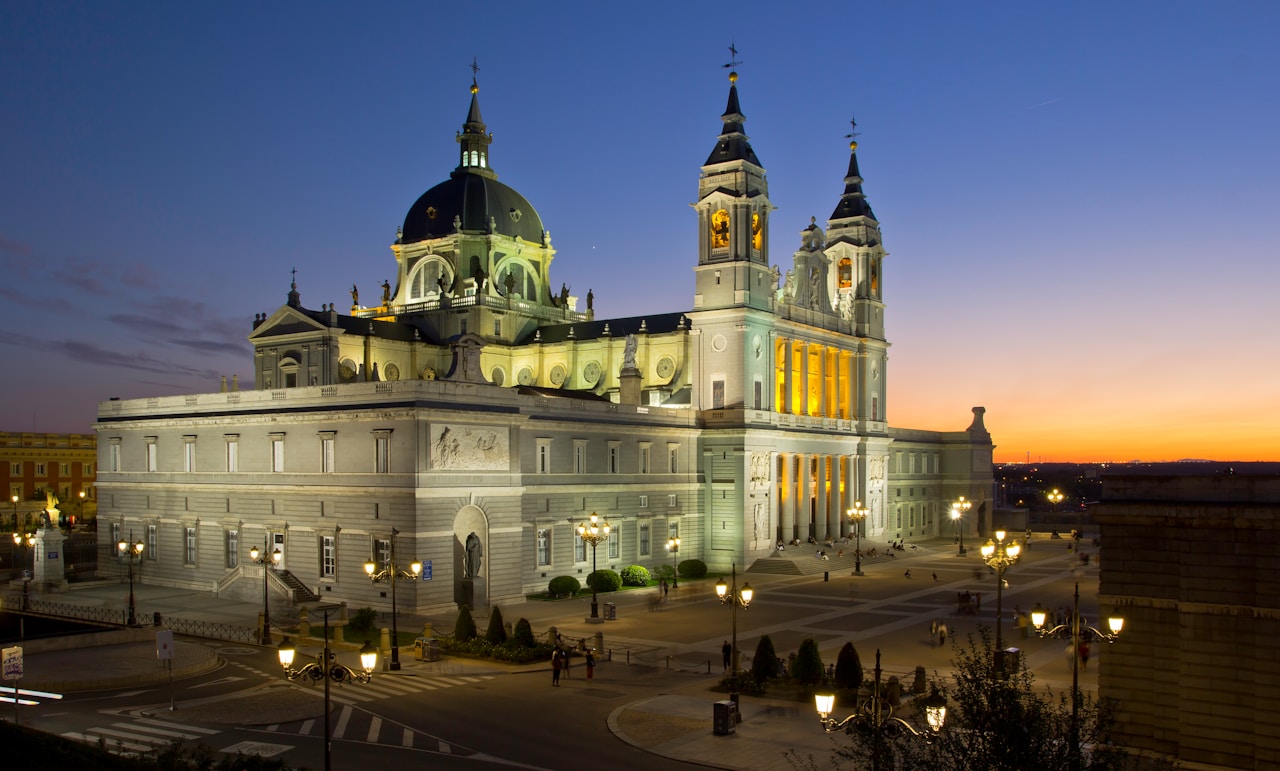
Madrid shines uniquely in each of its four distinct seasons, offering visitors an ever-changing array of activities and cultural experiences.
Spring and fall bring perfect weather for outdoor exploration of iconic spots like Retiro Park and Plaza Mayor, while summer sizzles with rooftop bars and lively night festivals.
Winter transforms the city into a cozy wonderland of Christmas markets and hearty cuisine.
Whether strolling through blooming gardens in April or sipping hot chocolate at historic Chocolatería San Ginés in December, every season in Madrid presents its own spectacular opportunities for memorable adventures.
You can read our comprehensive guide on the best things to do in Madrid for more recommendations and ideas.
Things to Enjoy in Spring and Fall
Spring and fall bring Madrid’s most glorious weather, with comfortable temperatures perfect for strolling through the city’s iconic parks and lingering at outdoor cafés along bustling sidewalks.
The cultural calendar bursts to life in April with events like the Art Madrid fair and Holy Week processions, while October dazzles visitors with the Veranos de la Villa festival and open-air concerts in Retiro Park.
Though both seasons offer similar mild temperatures, spring tends to see occasional rain showers that paint the city in lively blooms, while autumn delivers consistently sunny days with crisp, golden light illuminating Madrid’s historic architecture.
Outdoor Cafés, Parks, and Cultural Events
When visitors seek the most charming aspects of local life in the Spanish capital, the city’s outdoor cafés, verdant parks, and lively cultural events shine brightest during spring and fall.
Madrid’s pleasant temperatures create perfect conditions for authentic cultural immersion.
- El Retiro Park hosts free concerts and art exhibitions
- Outdoor cafés along Plaza Mayor buzz with energy
- Local festivals like San Isidro fill streets with music
- Rooftop terraces offer spectacular sunset views over tapas
Madrid Weather April vs. Madrid Weather October
How fascinating that these two shoulder-season months paint such distinctly different portraits of the Spanish capital!
April brings mild temperatures around 68°F (20°C) with occasional spring showers that blanket Madrid in blooming cherry blossoms.
October, meanwhile, treats visitors to crisp 70°F (21°C) days perfect for sightseeing, while golden leaves carpet El Retiro Park and wine harvests enliven local festivities.
Summer and Winter Highlights
Madrid’s summer and winter seasons present unique opportunities to experience the city’s rich cultural offerings, with many visitors seeking refuge from extreme temperatures in the city’s world-class museums and historic buildings.
During July’s scorching heat, locals and tourists alike flock to air-conditioned havens like the Prado Museum and the Royal Palace, while November’s chilly winds make Madrid’s cozy tapas bars and traditional teatros particularly inviting.
The city’s seasonal contrasts create distinct atmospheres – from summer’s lively nightlife that starts after sunset when temperatures cool, to winter’s festive charm with dazzling holiday lights and seasonal markets along Gran Vía.
Indoor Attractions for Extreme Heat or Cold
The diverse array of world-class indoor attractions in Madrid provides the perfect sanctuary from both scorching summers and chilly winters.
- The Prado Museum offers countless hours of artistic exploration through Spain’s most treasured masterpieces.
- Real Madrid’s Bernabéu Stadium Tour reveals the legendary club’s rich history in climate-controlled comfort.
- El Corte Inglés department stores combine shopping with rooftop dining and spectacular city views.
- The Royal Palace’s opulent state rooms showcase centuries of Spanish royal heritage.
Enjoying Madrid in July or Madrid In November
Whether visiting during the sun-drenched days of July or the crisp evenings of November, Madrid transforms itself to offer distinct seasonal experiences that captivate visitors year-round.
July brings lively outdoor concerts in Retiro Park and rooftop tapas under starlit skies, while November offers cozy wine tastings, world-class museum exhibits, and the magical Christmas lights along Gran Vía.
Wrapping Up
Madrid really comes alive in the spring and autumn. The city’s energy is infectious during these times, and it’s like the whole Iberian Peninsula is buzzing.
Whether you’re enjoying a glass of sangria on a sunny terrace in May or taking a stroll through Retiro Park’s beautiful fall foliage in October, these periods offer a great mix of nice weather, smaller crowds, and genuine experiences.
If you time your visit right, you’ll get to see Madrid at its best.

